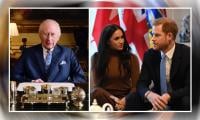Flying into Lyari for Eid
I’d like to talk about the deep feelings and innovative ideas of Lyari’s residents. I would take gre
By Mosharraf Zaidi
September 06, 2011
I’d like to talk about the deep feelings and innovative ideas of Lyari’s residents. I would take great pleasure in describing the light in the eyes of little children in Lyari as they told me about the NGO schools that they attend. I would rather enjoy describing the rustic beauty of Lyari’s young ladies, and the raw masculinity of Lyari’s young men.
Unfortunately, unlike Thomas Friedman’s helicopter visits to Afghanistan, I did not have an armed escort and a narrative-spewing machine accompanying me to Lyari. I ended up in Lyari because my hosts in Karachi, brilliant young reporter Shehryar Mirza and entrepreneur (and sometimes columnist) Shakir Husain consumed substantially more nahari than I did on Burns Road that night. This meant that I, an Urdu-speaking Mohajir who has not lived in Karachi since the early 1980s, was assigned the responsibility to drive the festive group home.
A couple of wrong turns and we were driving around a 2 a.m. desertedness on the streets that completely violated the notion of the stylised hot, crowded and flat Karachi we’ve come to expect. We only learnt that we were deep in the heart of Lyari upon noticing the visible and proud PPP paraphernalia, from school buildings to posters and hoardings, lauding Shaheed Mohtarma Benazir Bhutto. There was, of course, one other, rather large, giveaway.
We drove past two massive formations of police trucks and armoured personnel-carriers, each made up of no less than 150 fully armed policemen, lying in wait. Those that doubt there is a major operation going on in Lyari may be well served by a random drive through the area in the dead of night. Of course, as we experienced, this would naturally include, for small interludes, being tailed by multiple young men on motorcycles, and the anxiety induced by the eerie silence and emptiness of a new place.
On the best of days, Lyari is not a particularly hopeful place. Sandwiched between Machhar Colony, which ranks among the world’s largest ghettoes, and the heart of Karachi’s deeply under-serviced central business district, Lyari is a lot further from “Karachi” than the distance would suggest. Young Pakistanis from all across the country tend to find opportunity on and along I. I. Chundrigar Road, but few youngsters from Lyari ever do. This police operation will deepen the sense of alienation in Lyari.
The tensions that the police ops in Lyari are instigating are dangerous and widespread. They go far beyond the problems of urban decay, or ethnic ghettoisation in Karachi. The majority of Lyari is Sindhi and Baloch. It doesn’t take a genius to figure out that a cheap and easy route to the hearts and minds in the Sindhi countryside is through blood in Lyari. Claiming victimhood in Lyari will resonate with Sindhis across the province. This is an exceptionally opportune thing. It isn’t every day that Sindhis get a headline in discussions about Karachi.
As a third-generation Urdu-speaking Mohajir, it would be an impressive feat of creativity for me to claim objectivity when thinking, writing or speaking about Sindh or Karachi. This disclaimer is important when Pakistanis discuss politics and violence in Karachi. Karachi is a massive melting pot on the boil. Very few Pakistanis, if any, can claim the conversation to be one in which they have no stakes.
In April, I observed my grandfather’s first death anniversary. Daada moved to Hyderbabad, Sindh, from Buland Shehr, Uttar Pardesh, in August 1947. My father grew up in the heart of Hyderabad, in as idyllic a childhood as I’ve ever had described to me. My maternal grandfather, my naana, known to family and friends as Babu Jee, passed away in 1983. He moved to Pakistan in 1970 from a town in UP named Gulaothi. I had the privilege of visiting Babu Jee’s grave at Yaseenabad in Karachi this Eid, after more than a decade. His port of landing in Pakistan was Bahawalpur, though he settled in Karachi’s Dastagir neighbourhood. Many smaller parts of the larger extended family, on both my mother’s and father’s sides settled across the country – in Sargodha, in Tando Allahyar, in Mirpur Khas, and across southern Punjab, including Bahawalpur, Multan and Rahimyar Khan.
Sixty-four years since arriving, wide swathes of my extended family speak Punjabi, Saraiki and English. Yet less than half-a-dozen can speak Sindhi fluently. Those were the ones that settled and stayed in what we call the “interior.” Just think of the language here: “Interior Sindh.” Interior. Inside. Hidden. Covered. Mysterious. Unexplainable?
The fact that the Sindhi language, Sindhi culture, and Sindhi socio-political discourse at large are so removed from the overarching discussions about Karachi is telling. In these six decades Pakistani historians have lauded the sacrifices of immigrants from UP, Bihar and Punjab. Tributes are even paid to the sacrifices of Bengali-speaking Pakistanis – notwithstanding the partition of Pakistan in 1971. But what about what Sindhis sacrificed? Where is that story in the larger national discourse? Think hard.
If you’re drawing a blank, then understanding the appeal of Zulfiqar Mirza’s invective should not be too difficult. Stereotyping Sindhi political and social identity with ajraks, vaderas and dacoits in “interior Sindh” regularly goes unchallenged in Pakistan. Why should the stereotyping of Mohajirs with the MQM, and the stereotyping of the MQM with bhatta-financing, with targeted killings and with urban violence at large be any different? The fact is that it isn’t. Powerful stereotypes are not restricted to Larkana or Nawabshah. Far from the madness of Mirza’s hate-fuelled ethno-political theatrics, the twinning of Mohajir identity with the MQM and the twinning of the MQM with violence is a distinct and palpable reality in living rooms right across Punjab.
So what we have here is Zulfiqar Mirza, otherwise a political non-entity, become a national figure based on his specific targeting of an ethnic group and the largest representative political party for that group. What’s the punchline? The more that Mohajirs are demonised in the rest of the country, the closer the embrace between them and the MQM becomes. After all, who else will middle- and lower-middle-class Urdu-speaking Karachiites turn to? The army that conducted operation Clean-up? The Imran Khan that undermined Javed Miandad? The PPP of Pukka Qila? The Munawwar Hassan that can’t operate without the blessings of the JUI? As someone famously once said, “lol.”
Most Pakistanis simply don’t believe that the Pakistani state is capable or willing to take on the criminal mafia, the extortionists and those carrying out targeted killings who are marking their ethnic territory with blood. Most Pakistanis also don’t believe that the MQM has a major problem with this mafia, these extortionists and these killers. The MQM’s virtual silence in the face of Mirza’s toxic onslaught is telling. If politics is like wrestling, the PPP has the MQM in a sleeper-hold. But it must not mistake the sleeper-hold for a kill shot. If it pushes too hard, it will only strengthen the MQM’s rock-solid base of support in Karachi. If it doesn’t push at all, it will have to continue playing poker with the Raabita Committee of the MQM.
Worst of all, no matter what the Central Executive Committee of the PPP or the Raabita Committee of the MQM decide, the chances that a kid in Lyari will end up working at a bank on I. I. Chundrigar Road will remain ridiculously slim. This diet of opportunity in Sindh is the real long-term cancer. Both the tortuous Zulfiqar Mirza and the conspicuously silent MQM seem immune to the tumour.
The writer advises governments, donors and NGOs on public policy.
Unfortunately, unlike Thomas Friedman’s helicopter visits to Afghanistan, I did not have an armed escort and a narrative-spewing machine accompanying me to Lyari. I ended up in Lyari because my hosts in Karachi, brilliant young reporter Shehryar Mirza and entrepreneur (and sometimes columnist) Shakir Husain consumed substantially more nahari than I did on Burns Road that night. This meant that I, an Urdu-speaking Mohajir who has not lived in Karachi since the early 1980s, was assigned the responsibility to drive the festive group home.
A couple of wrong turns and we were driving around a 2 a.m. desertedness on the streets that completely violated the notion of the stylised hot, crowded and flat Karachi we’ve come to expect. We only learnt that we were deep in the heart of Lyari upon noticing the visible and proud PPP paraphernalia, from school buildings to posters and hoardings, lauding Shaheed Mohtarma Benazir Bhutto. There was, of course, one other, rather large, giveaway.
We drove past two massive formations of police trucks and armoured personnel-carriers, each made up of no less than 150 fully armed policemen, lying in wait. Those that doubt there is a major operation going on in Lyari may be well served by a random drive through the area in the dead of night. Of course, as we experienced, this would naturally include, for small interludes, being tailed by multiple young men on motorcycles, and the anxiety induced by the eerie silence and emptiness of a new place.
On the best of days, Lyari is not a particularly hopeful place. Sandwiched between Machhar Colony, which ranks among the world’s largest ghettoes, and the heart of Karachi’s deeply under-serviced central business district, Lyari is a lot further from “Karachi” than the distance would suggest. Young Pakistanis from all across the country tend to find opportunity on and along I. I. Chundrigar Road, but few youngsters from Lyari ever do. This police operation will deepen the sense of alienation in Lyari.
The tensions that the police ops in Lyari are instigating are dangerous and widespread. They go far beyond the problems of urban decay, or ethnic ghettoisation in Karachi. The majority of Lyari is Sindhi and Baloch. It doesn’t take a genius to figure out that a cheap and easy route to the hearts and minds in the Sindhi countryside is through blood in Lyari. Claiming victimhood in Lyari will resonate with Sindhis across the province. This is an exceptionally opportune thing. It isn’t every day that Sindhis get a headline in discussions about Karachi.
As a third-generation Urdu-speaking Mohajir, it would be an impressive feat of creativity for me to claim objectivity when thinking, writing or speaking about Sindh or Karachi. This disclaimer is important when Pakistanis discuss politics and violence in Karachi. Karachi is a massive melting pot on the boil. Very few Pakistanis, if any, can claim the conversation to be one in which they have no stakes.
In April, I observed my grandfather’s first death anniversary. Daada moved to Hyderbabad, Sindh, from Buland Shehr, Uttar Pardesh, in August 1947. My father grew up in the heart of Hyderabad, in as idyllic a childhood as I’ve ever had described to me. My maternal grandfather, my naana, known to family and friends as Babu Jee, passed away in 1983. He moved to Pakistan in 1970 from a town in UP named Gulaothi. I had the privilege of visiting Babu Jee’s grave at Yaseenabad in Karachi this Eid, after more than a decade. His port of landing in Pakistan was Bahawalpur, though he settled in Karachi’s Dastagir neighbourhood. Many smaller parts of the larger extended family, on both my mother’s and father’s sides settled across the country – in Sargodha, in Tando Allahyar, in Mirpur Khas, and across southern Punjab, including Bahawalpur, Multan and Rahimyar Khan.
Sixty-four years since arriving, wide swathes of my extended family speak Punjabi, Saraiki and English. Yet less than half-a-dozen can speak Sindhi fluently. Those were the ones that settled and stayed in what we call the “interior.” Just think of the language here: “Interior Sindh.” Interior. Inside. Hidden. Covered. Mysterious. Unexplainable?
The fact that the Sindhi language, Sindhi culture, and Sindhi socio-political discourse at large are so removed from the overarching discussions about Karachi is telling. In these six decades Pakistani historians have lauded the sacrifices of immigrants from UP, Bihar and Punjab. Tributes are even paid to the sacrifices of Bengali-speaking Pakistanis – notwithstanding the partition of Pakistan in 1971. But what about what Sindhis sacrificed? Where is that story in the larger national discourse? Think hard.
If you’re drawing a blank, then understanding the appeal of Zulfiqar Mirza’s invective should not be too difficult. Stereotyping Sindhi political and social identity with ajraks, vaderas and dacoits in “interior Sindh” regularly goes unchallenged in Pakistan. Why should the stereotyping of Mohajirs with the MQM, and the stereotyping of the MQM with bhatta-financing, with targeted killings and with urban violence at large be any different? The fact is that it isn’t. Powerful stereotypes are not restricted to Larkana or Nawabshah. Far from the madness of Mirza’s hate-fuelled ethno-political theatrics, the twinning of Mohajir identity with the MQM and the twinning of the MQM with violence is a distinct and palpable reality in living rooms right across Punjab.
So what we have here is Zulfiqar Mirza, otherwise a political non-entity, become a national figure based on his specific targeting of an ethnic group and the largest representative political party for that group. What’s the punchline? The more that Mohajirs are demonised in the rest of the country, the closer the embrace between them and the MQM becomes. After all, who else will middle- and lower-middle-class Urdu-speaking Karachiites turn to? The army that conducted operation Clean-up? The Imran Khan that undermined Javed Miandad? The PPP of Pukka Qila? The Munawwar Hassan that can’t operate without the blessings of the JUI? As someone famously once said, “lol.”
Most Pakistanis simply don’t believe that the Pakistani state is capable or willing to take on the criminal mafia, the extortionists and those carrying out targeted killings who are marking their ethnic territory with blood. Most Pakistanis also don’t believe that the MQM has a major problem with this mafia, these extortionists and these killers. The MQM’s virtual silence in the face of Mirza’s toxic onslaught is telling. If politics is like wrestling, the PPP has the MQM in a sleeper-hold. But it must not mistake the sleeper-hold for a kill shot. If it pushes too hard, it will only strengthen the MQM’s rock-solid base of support in Karachi. If it doesn’t push at all, it will have to continue playing poker with the Raabita Committee of the MQM.
Worst of all, no matter what the Central Executive Committee of the PPP or the Raabita Committee of the MQM decide, the chances that a kid in Lyari will end up working at a bank on I. I. Chundrigar Road will remain ridiculously slim. This diet of opportunity in Sindh is the real long-term cancer. Both the tortuous Zulfiqar Mirza and the conspicuously silent MQM seem immune to the tumour.
The writer advises governments, donors and NGOs on public policy.
-
 ‘Entitled’ Andrew Mountbatten-Windsor Is Still Winding People Up: ‘That’s What He’s Used To’
‘Entitled’ Andrew Mountbatten-Windsor Is Still Winding People Up: ‘That’s What He’s Used To’ -
 Why Sarah Ferguson Will Not Leave Andrew Despite Ultimate Humiliation
Why Sarah Ferguson Will Not Leave Andrew Despite Ultimate Humiliation -
 Sylvester Stallone Stuns Internet In New Video
Sylvester Stallone Stuns Internet In New Video -
 Sophie Turner Talks About ‘nesting’ In Early 20s: ‘Big Break’
Sophie Turner Talks About ‘nesting’ In Early 20s: ‘Big Break’ -
 Brooklyn Beckham Claims Family Blocked Him First In Bombshell Statement
Brooklyn Beckham Claims Family Blocked Him First In Bombshell Statement -
 Sarah Ferguson Resorts To A Cynical Attempt At Survival And Runa Out Of Lives
Sarah Ferguson Resorts To A Cynical Attempt At Survival And Runa Out Of Lives -
 Nicole Kidman 'calm' And Focused After Keith Urban Split
Nicole Kidman 'calm' And Focused After Keith Urban Split -
 Prince Harry Deserves UK Security: ‘Didn’t Choose His Fate’
Prince Harry Deserves UK Security: ‘Didn’t Choose His Fate’ -
 Brooklyn Beckham Goes Public With His Side Of The Story Amid Feud With Family
Brooklyn Beckham Goes Public With His Side Of The Story Amid Feud With Family -
 Sarah Ferguson & Andrew Turn Volatile And Makes Buckingham Palace’s Biggest Fear Come True
Sarah Ferguson & Andrew Turn Volatile And Makes Buckingham Palace’s Biggest Fear Come True -
 Meghan Markle’s Laundry List Of Demands Finally Gets Answer By King Charles?
Meghan Markle’s Laundry List Of Demands Finally Gets Answer By King Charles? -
 Brooklyn Beckham Finds It 'hard' To Keep Contact With Sister Harper
Brooklyn Beckham Finds It 'hard' To Keep Contact With Sister Harper -
 New Mystery About 'Ring Nebula' Shock Astronomers: Here's Why
New Mystery About 'Ring Nebula' Shock Astronomers: Here's Why -
 Prince Harry Picks PR Photos In Fear Of ‘bald Spots’
Prince Harry Picks PR Photos In Fear Of ‘bald Spots’ -
 Saying Prince Harry Will ‘probably Be Fine Isn’t Good Enough’, Expert Speaks Out
Saying Prince Harry Will ‘probably Be Fine Isn’t Good Enough’, Expert Speaks Out -
 Inside Meghan Markle’s Plans ‘With Love, Meghan’: Season 3 And Valentines Day Specials
Inside Meghan Markle’s Plans ‘With Love, Meghan’: Season 3 And Valentines Day Specials



